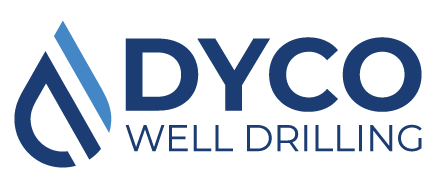Access to clean and safe water is a fundamental necessity for every individual. However, in many parts of the world, this basic requirement is not readily available. Well drilling offers a practical and sustainable solution to this issue by tapping into underground water sources. Whether you are considering drilling a well for personal or community use, this comprehensive guide will equip you with the knowledge and understanding you need to embark on this important endeavor. From understanding the different types of wells and their benefits, to the step-by-step process of drilling and maintaining a well, we will delve into the world of well drilling to ensure you have access to clean water for years to come.
Understanding the importance of clean water access
Access to clean water is a basic necessity that many people take for granted. However, in many parts of the world, clean water is a scarce resource, and millions of people do not have access to it. This lack of access can lead to a range of health issues, including waterborne diseases and malnutrition. It is crucial to understand the importance of clean water and the impact it has on communities and individuals. Clean water is not just essential for drinking; it is also necessary for cooking, bathing, sanitation, and agricultural purposes. When communities have access to clean water, they can lead healthier and more productive lives. Children can attend school regularly without falling ill, and adults can work without worrying about their health. Additionally, clean water access can help break the cycle of poverty by enabling communities to grow food, generate income, and improve overall living conditions. Well drilling plays a vital role in providing clean water access to communities. By understanding the significance of clean water and the impact it has on individuals and communities, we can appreciate the importance of well drilling initiatives and work towards ensuring clean water access for all.
Types of wells and their benefits
When it comes to well drilling, there are several types of wells to consider, each with their own unique benefits. Let’s dive into some of the most common types:
1. Dug Wells: Dug wells are typically shallow and rely on excavating a hole in the ground until water is reached. These wells are often lined with bricks, stones, or concrete to prevent collapse. The benefit of a dug well is that it can be a cost-effective option for areas with a high water table.
2. Driven Wells: Driven wells are created by driving a pipe or casing into the ground until it reaches a water source. This method is commonly used in areas with sandy or loose soil. The advantage of driven wells is that they can be relatively easy and quick to install.
3. Drilled Wells: Drilled wells involve using a drilling rig to bore deep into the ground to access groundwater. This method is often used in areas with hard rock formations. Drilled wells can provide a more reliable water source and typically have a longer lifespan.
4. Artesian Wells: Artesian wells tap into a confined aquifer where water is under pressure, causing it to rise to the surface without the need for pumping. These wells can provide a consistent flow of water and are often considered a sustainable option.
5. Hand-Dug Wells: Hand-dug wells are exactly as they sound – wells dug by hand using manual tools. While this method can be labor-intensive, it can be a viable option in remote areas where access to machinery is limited. Each type of well has its own set of advantages, so it’s important to consider factors such as cost, soil conditions, and water availability when choosing which type of well is best suited for your needs. Consulting with a professional well driller will help you make an informed decision and ensure that you have a clean and reliable source of water for years to come.
Step-by-step guide to drilling a well
Drilling a well is an involved process, but with the right knowledge and tools, it can be a rewarding experience. Here is a step-by-step guide to help you navigate the process of drilling a well. Step 1: Determine the Water Source Before you begin drilling, it is essential to determine the water source on your property. Consult with a professional or conduct a water survey to identify the location and depth of the underground water table.
Step 2: Obtain Permits and Permissions Check local regulations and obtain the necessary permits and permissions required for drilling a well. This step ensures that you adhere to legal requirements and environmental standards.
Step 3: Engage Professional Services Consider hiring a professional well drilling company to handle the drilling process. They have the expertise, equipment, and experience to safely and efficiently drill your well.
Step 4: Choose the Right Drilling Method Discuss with the drilling company the most suitable drilling method for your situation. Common methods include rotary, cable tool, or hydraulic drilling. Factors such as soil type, geological conditions, and water table depth will influence the choice of method.
Step 5: Prepare the Site Clear the drilling site of any obstructions or debris. Ensure that the area is easily accessible for drilling equipment and that safety precautions are in place.
Step 6: Start Drilling The drilling process begins with the installation of a casing, which serves as a protective liner for the well. The drilling equipment is then used to create a borehole by rotating, pounding, or jetting. As the depth increases, periodic removal of cuttings and flushing with water or drilling mud is necessary.
Step 7: Test the Water Quality Once the desired depth is reached, water samples are taken to test for quality and purity. This helps determine the suitability of the water for consumption and any necessary treatment.
Step 8: Install Pump and Well Components If the water quality meets the required standards, the next step is to install the pump and other necessary well components. This includes a submersible or jet pump, pressure tank, and control system to ensure efficient water delivery to your home or property.
Step 9: Obtain Final Inspections and Approvals Contact local authorities for final inspections and approvals to ensure that your well meets all safety and regulatory standards. By following this step-by-step guide, you can successfully drill a well and access clean and reliable water for your needs. However, it is crucial to consult with professionals and adhere to local regulations to ensure a safe and efficient drilling process.
Maintaining and troubleshooting your well.
Once you have successfully drilled a well and have a clean and reliable source of water, it is important to ensure that you maintain and troubleshoot your well regularly. By doing so, you can prolong the life of your well and prevent any potential issues from arising. Regular maintenance of your well includes conducting routine inspections, checking for any signs of damage or deterioration, and ensuring that all components are working properly. This can be done by visually inspecting the wellhead, piping, and pressure tank for any leaks or corrosion. It is also important to monitor the water pressure and quality regularly to ensure that it meets the desired standards. In addition to routine maintenance, it is crucial to be aware of any potential issues that may arise with your well and be prepared to troubleshoot them. Common problems that can occur include low water pressure, pump failure, contamination, and sediment buildup. If you notice any changes in your water quality or experience a decrease in water pressure, it is essential to investigate and address the issue promptly. To troubleshoot your well effectively, it is recommended to consult with a professional well contractor or plumber who has expertise in well systems. They can provide guidance and assistance in identifying and resolving any problems that you may encounter. It is important to avoid attempting complex repairs or modifications on your own, as this can lead to further damage or compromise the safety of your well. By properly maintaining and troubleshooting your well, you can ensure the longevity and functionality of your water supply. Regular inspections, prompt repairs, and professional assistance will help you to enjoy clean and reliable water for years to come.

